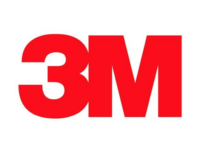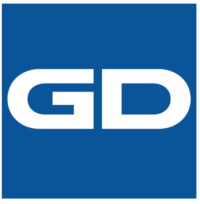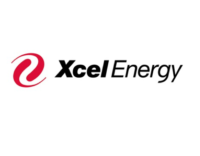Dividend-paying stocks make ideal buy and hold investments because they’re less volatile and deliver better long-term performance than non-dividend-paying stocks. The best dividend stocks to buy and hold have long dividend histories, generate reliable cash flow and are recession-resistant. Utilities, industrials and defense industry stocks are good places to start your search, though an established stock from any industry can make a good long-term holding. Here are my top 10 buy-and-hold dividend stocks to buy today.

Get My Free Report Now

Get My Free Report Now

Get My Free Report Now

Get My Free Report Now
(And after you finish this article, be sure to check out my 10 Best Dividend-Paying Stocks for Dividend Growth Investors and 10 Best High Yield Dividend Stocks articles as well.)
10 Best Dividend Stocks to Buy and Hold
- 3M (MMM)
- Aqua America (WTR)
- ConEd (ED)
- Donaldson Company (DCI)
- General Dynamics (GD)
- Realty Income Corp. (O)
- S&P Global (SPGI)
- Sherwin-Williams (SHW)
- Sysco (SYY)
- Xcel Energy (XEL)
1. 3M (MMM) Dividend Yield: 2.2%
I’ve always associated 3M with Post-It Notes, but consumer products account for only 15% of 3M’s sales. The rest of the company’s revenue comes from the industrial sector (35% of sales), health care sector (19%) and multi-industry sales of safety equipment and electronics (20% and 15%). In short, 3M products are everywhere, from welding masks, to kitchen sponges, to electronic stethoscopes, to the coating sprayed on road signs to make them more reflective.
This diversity of applications and customers lends stability to 3M’s revenues. In addition, consumables make up almost 50% of sales, which means lots of repeat purchases, improving the predictability of revenues.
3M’s reliable cash flow has enabled the company to pay dividends consistently for 100 years. 3M has also increased its dividend in each of the past 58 years, making it a Dividend Aristocrat. (Dividend Aristocrats are companies that have increased their dividends at least once per year, every year, for at least 25 straight years.) It doesn’t get much more long-term than that.
2. Aqua America (WTR) Dividend Yield: 2.4%
Aqua America is the nation’s second-biggest dedicated water and wastewater utility. That’s about as predictable a business as you’ll find—water consumption varies little and grows steadily along with populations. The company has very strong margins, and very consistent revenue growth. That has enabled Aqua America to pay dividends consistently since 1988.
But Aqua America is also growing through acquisitions and investments in capital improvements. The company also takes advantage of rules in several states (including Pennsylvania and New Jersey) that allow utility rate increases based on infrastructure investment. These growth initiatives have allowed Aqua America to increase its dividend in each of the past nine years, with the increases averaging 8% per year over past five years.
3. Consolidated Edison (ED) Dividend Yield: 3.4%
ConEd is an electric, gas and steam utility serving New York City and nearby areas. ConEd has increased its dividend for 42 years in a row, making it another Dividend Aristocrat. Growth is slow: over the past decade, the dividend has grown by just 1.6% per year on average. This reflects the utility’s slow-and-steady earnings growth: EPS have increased by an average of 3.4% per year over the same period. While ED isn’t lighting the world on fire, cash flow—and thus the dividend—are highly reliable.
4. Donaldson Company (DCI) Dividend Yield: 1.6%
Minneapolis-based Donaldson makes air filters used in transportation and industrial applications. Their industrial segment makes air filters for everything from hard drives to windmills, while the engine division makes filters for trucks, helicopters, planes, heavy-duty vehicles and more. Demand is closely tied to industrial production and economic growth. Sales started to decline in 2013, and the stock struggled through 2014. The next year brought a 27% decline in the stock price, and revenues and earnings continued to fall into 2016.
But Donaldson continued to pay dividends throughout the rough patch; the company has an unbroken 32-year streak of dividend increases. That consistency is possible thanks to Donaldson’s high free cash flow, which dipped but remained well above capital requirements (including the dividend) during the slump.
And things are now looking up for Donaldson. Revenues and earnings are rebounding, and the company’s payout ratio has already fallen back into the low 40s, after rising as high as 49% last year.
5. General Dynamics (GD) Dividend Yield: 1.6%
Virgina-based General Dynamics is an aerospace and defense company. The company makes naval destroyers, nuclear submarines, tanks, vehicle-mounted weapons, Gulfstream jets and more. Most of its revenues come from long-term government contracts, so cash flow is highly predictable. General Dynamics has been sharing that predictable cash flow with investors through dividend payments since 1987. The company has increased the dividend in each of the last 19 years, with the increases averaging 5% per year over the last five years.
6. Realty Income Corp (O) Dividend Yield: 4.5%
As the name implies, Realty Income is a real estate investment trust, or REIT, that is serious about income, with the distinctive ticker symbol O. Founded to provide investors with rising monthly income, O has paid a dividend every month since coming public in 1994, and has increased the dividend every year since 1996. Today, the REIT yields 4.4%.
Realty Income owns over 5,000 properties, mostly free-standing commercial buildings leased to non-discretionary retailers like convenience stores, dollar stores and drug stores.
Because of its strong track record, O is one of the largest, most well-known and widely held of the many REITs that pay dividends monthly. The stock has relatively low volatility, and is a good choice for any investor looking for monthly income.
7. S&P Global (SPGI) Dividend Yield: 1.0%
S&P Global is one of the newest Dividend Aristocrats; the company started paying dividends in 2004, and has increased its payout every year since (even during the financial crisis). The company provides market data and analytics, credit ratings and research. The growing popularity of index investing is good news for S&P: the company currently calculates over one million indexes daily, and is the market’s number-one index provider based on ETFs linked to their products. S&P is also one of the “big three” credit rating agencies, so revenues expand when corporate debt issuance is rising. Revenues have risen every year since 2010. Free cash flow and earnings trends are less predictable than at some of the other Dividend Aristocrats, but the company has enough financial flexibility to maintain its regular dividend increases anyway.
8. Sherwin-Williams (SHW) Dividend Yield: 0.9%
You’re probably already familiar with Sherwin-Williams through its products, which include Sherwin-Williams, Valspar and Krylon brand paints. The company’s paint business can be susceptible to downturns in construction and the housing market, but is generally very stable. But SHW isn’t just stable: the company is also growing, organically and through acquisitions. Revenues have grown every year since 2009, and EPS have doubled since 2012. That’s thanks in part to Sherwin-Williams’ efforts to improve margins, which have risen from 10% in 2012 to 15% last year. The dividend is growing too; Sherwin-Williams has increased its dividend every year since 1979, making the stock a Dividend Aristocrat. Over the past decade, the annual increases have averaged over 10%, which is not too shabby for such a reliable investment.
9. Sysco (SYY) Dividend Yield: 2.4%
Another Dividend Aristocrat, food distributor Sysco has increased its dividend every year since 1971. Revenues have increased every year since 2009, fueling annual EPS growth of about 3% per year. Last year, 63% of Sysco’s sales were to restaurants, and the remainder were to recession-resistant customers like hospitals and schools and corporate cafeterias. In 2016, Sysco made a significant expansion into Europe through the acquisition of U.K.-based Brakes Group, which operates in Belgium, Britain, France, Ireland, Luxembourg, Spain and Sweden. The company is also restructuring to improve margins, which have fallen in recent years due to rising food prices and declining restaurant visits. But while Sysco faces some short-term challenges, the company has proven itself an incredibly reliable long-term investment.
10. Xcel Energy (XEL) Dividend Yield: 3.0%
Rounding out my list of the 10 best dividend stocks to buy and hold is a Minneapolis-based utility, which comes with all the predictability that implies. But the company is also forward-thinking, and over the past decade, it has become the leading wind energy producer in the U.S. By 2021, Xcel plans to be the first U.S. utility producing over 10,000 megawatts of wind power (enough to power every home in Minnesota and Wisconsin). Xcel has paid dividends without interruption since 1987. The company has a 13-year record of dividend growth, and targets annual growth of 5% to 7%. The company’s payout ratio is very stable, ranging from 57% to 66% over the past decade. Long-term investors will find a reliable partner in Xcel.
If you’re also looking for medium-term price appreciation from your income investments, be sure to read my list of the 10 Best Dividend-Paying Stocks for Dividend Growth Investors as well.















